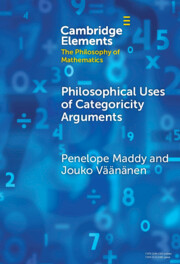Refine search
Actions for selected content:
28 results

Deep Learning in Quantitative Trading
-
- Published online:
- 03 October 2025
- Print publication:
- 30 October 2025
-
- Element
- Export citation
Dissertation abstract: The experimental analysis of the political economics of fisheries governance
-
- Journal:
- Experimental Economics / Volume 10 / Issue 2 / June 2007
- Published online by Cambridge University Press:
- 14 March 2025, pp. 181-182
-
- Article
- Export citation
The Secure Boston Mechanism: theory and experiments
-
- Journal:
- Experimental Economics / Volume 22 / Issue 4 / December 2019
- Published online by Cambridge University Press:
- 14 March 2025, pp. 918-953
-
- Article
- Export citation
Preference intensities and risk aversion in school choice: a laboratory experiment
-
- Journal:
- Experimental Economics / Volume 16 / Issue 1 / March 2013
- Published online by Cambridge University Press:
- 14 March 2025, pp. 1-22
-
- Article
- Export citation
Rural electrification, the credibility revolution, and the limits of evidence-based policy
-
- Journal:
- Environment and Development Economics / Volume 30 / Issue 1 / February 2025
- Published online by Cambridge University Press:
- 15 January 2025, pp. 70-81
-
- Article
-
- You have access
- Open access
- HTML
- Export citation
Monetary incentives and the contagion of unethical behavior
-
- Journal:
- Journal of the Economic Science Association / Volume 10 / Issue 2 / December 2024
- Published online by Cambridge University Press:
- 01 January 2025, pp. 213-231
-
- Article
- Export citation

Philosophical Uses of Categoricity Arguments
-
- Published online:
- 02 December 2023
- Print publication:
- 21 December 2023
-
- Element
- Export citation
Contaminated water and the Food Safety Modernization Act
-
- Journal:
- Agricultural and Resource Economics Review / Volume 52 / Issue 3 / December 2023
- Published online by Cambridge University Press:
- 18 July 2023, pp. 623-653
-
- Article
-
- You have access
- Open access
- HTML
- Export citation
Keeping ahead of the game: Innovations and challenges in e-government in Malaysia
-
- Journal:
- The Economic and Labour Relations Review / Volume 24 / Issue 4 / December 2013
- Published online by Cambridge University Press:
- 01 January 2023, pp. 549-567
-
- Article
- Export citation
The Weak Spot of Infrastructure BCA: Cost Overruns in Seven Road and Railway Construction Projects
-
- Journal:
- Journal of Benefit-Cost Analysis / Volume 13 / Issue 2 / Summer 2022
- Published online by Cambridge University Press:
- 03 August 2022, pp. 224-246
-
- Article
- Export citation

Wittgenstein's Philosophy of Mathematics
-
- Published online:
- 23 July 2021
- Print publication:
- 12 August 2021
-
- Element
- Export citation
Achieving Economically Feasible Drinking Water Regulation
-
- Journal:
- Journal of Benefit-Cost Analysis / Volume 11 / Issue 2 / Summer 2020
- Published online by Cambridge University Press:
- 25 June 2020, pp. 294-318
-
- Article
- Export citation
The Benefits and Costs of Using Social Distancing to Flatten the Curve for COVID-19
-
- Journal:
- Journal of Benefit-Cost Analysis / Volume 11 / Issue 2 / Summer 2020
- Published online by Cambridge University Press:
- 21 May 2020, pp. 179-195
-
- Article
-
- You have access
- Open access
- HTML
- Export citation
Office of Information and Regulatory Affairs: Past, Present, and Future
-
- Journal:
- Journal of Benefit-Cost Analysis / Volume 11 / Issue 1 / Spring 2020
- Published online by Cambridge University Press:
- 17 December 2019, pp. 2-37
-
- Article
- Export citation
Dynamic Benefit-Cost Analysis for Uncertain Futures
-
- Journal:
- Journal of Benefit-Cost Analysis / Volume 10 / Issue 2 / Summer 2019
- Published online by Cambridge University Press:
- 02 September 2019, pp. 206-225
-
- Article
-
- You have access
- Open access
- HTML
- Export citation
The reimbursement of new medical technologies in German inpatient care: What factors explain which hospitals receive innovation payments?
-
- Journal:
- Health Economics, Policy and Law / Volume 15 / Issue 3 / July 2020
- Published online by Cambridge University Press:
- 04 June 2019, pp. 355-369
-
- Article
- Export citation
Benefit-Cost Analysis in EU Chemicals Legislation: Experiences from over 100 REACH Applications for Authorisation
-
- Journal:
- Journal of Benefit-Cost Analysis / Volume 9 / Issue 1 / Spring 2018
- Published online by Cambridge University Press:
- 12 April 2018, pp. 181-204
-
- Article
- Export citation
Building on Incomplete Foundations: Financial Stability Policy since the Crash
-
- Journal:
- National Institute Economic Review / Volume 241 / August 2017
- Published online by Cambridge University Press:
- 01 January 2020, pp. R33-R47
- Print publication:
- August 2017
-
- Article
- Export citation
Consumer’s Guide to Regulatory Impact Analysis: Ten Tips for Being an Informed Policymaker
-
- Journal:
- Journal of Benefit-Cost Analysis / Volume 8 / Issue 2 / Summer 2017
- Published online by Cambridge University Press:
- 27 July 2017, pp. 187-204
-
- Article
-
- You have access
- Open access
- HTML
- Export citation
Regulatory Process, Regulatory Reform, and the Quality of Regulatory Impact Analysis1
-
- Journal:
- Journal of Benefit-Cost Analysis / Volume 7 / Issue 3 / Fall 2016
- Published online by Cambridge University Press:
- 07 November 2016, pp. 523-559
-
- Article
- Export citation
